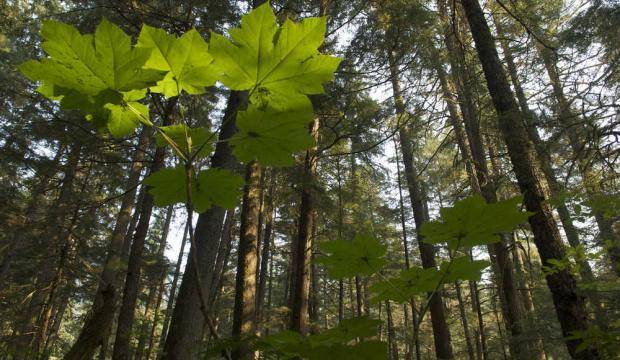Across the states, the Forest Service National Roadless Rule prevents new roads from being carved into the few remaining pockets of undisturbed ecosystems on Forest Service lands. Where intact ecosystems have already been destroyed, it’s a bit like “closing the barn door” after all the horses have gone.
In Alaska, we are fortunate to still have some Forest Service lands that are healthy vibrant ecosystems, providing rich fishery resources and buffering us from the escalating effects of warmer air and water temperatures. We are in position to benefit more each year from the existing Roadless Rule, which currently steers the construction of all new roads to areas of the forest that have already been altered by development.
Unfortunately, there is a current push to have Alaska exempted from the Roadless Rule. The one region that stands to benefit the most from the roadless rule, is at risk of having it stripped away and being subjected to the failed practices that caused irrevocable destruction across the Lower 48. To complete the analogy, that’s like burning down the barn.
You may ask, “Why should I care about roadless areas of the Tongass National Forest?” For starters, roadless areas provide the perfect habitat to grow our spectacular runs of salmon that provide healthy food for our bodies, a rich foundation for subsistence cultures, and a wealth of employment in commercial and charter fishing jobs.
When you see giant old trees, laced in clouds and gracing the flanks of our mountains, they are more than just beautiful silhouettes. These trees collect moisture from the clouds and return it to the soil, holding onto the water in the rich layers of moss and lichen, berries and medicinal plants like the devil’s club; protecting all forms of life against times of drought.
These trees and understory also provide shade over the seemingly infinite number of rivulets, creeks and streams. Without this shade, water temperatures would rise to the point where our treasured salmon can’t survive. Washington and Oregon salmon runs have been hit hard by higher water temperatures and the erosion associated with blasting too many roads into their forests.
But it’s not too late in Alaska, and we don’t have to make the same mistakes. The Forest Service has not yet made a final decision regarding whether Alaska will be exempted from the Roadless Rule. If they can be persuaded to drop the proposed exemption, our rivers will stay healthy and our salmon populations can thrive far into a more hopeful future.
Roadless areas of the Tongass also offer a glimpse into the mystery and beauty of life, giving us pause to consider the wonders of creation, and gain perspective on things greater than ourselves and our daily worries. This forest and the interrelated systems of glaciers and whales and scenic marvels have drawn hundreds of thousands of visitors over recent decades. These visitors contribute to our economic vitality, and they come here to experience the magic of our relatively unspoiled environment.
In addition to sustaining our salmon and feeding our hearts, roadless areas of the Tongass provide us with a carbon reservoir, removing CO2 from the air and trapping it in the beautiful bodies of these same trees and plants that protect us from drought. The root systems under the forest floor provide a nearly perfect structure for stabilizing hillsides against landslides and erosion, keeping our streams clean and clear of the sediments that smother and kill salmon eggs. Even the lichens play an important role, keeping our air filtered from the pollution caused by cars, heating systems, and cruise ship smokestacks.
When many parts of the world are struggling to repair damage, scrambling to stop the unraveling of their ecosystems, why would we willingly start the process of degradation in healthy portions of our forest? If you think about the effects of deforestation in Brazil, or erosion washing away entire Alaskan villages, it can feel overwhelming. But we have an opportunity to do something tremendously positive right here in our own back yard, by making sure that Alaska is not exempted from the roadless rule.
Comments will be accepted at the Forest Service through Dec. 17: www.fs.usda.gov/project/?project=54511 or akroadlessrule@fs.fed.us.
• Kathy Coghill is a former fishery biologist for the Forest Service (1982-88, and again 1993-96) and has her masters in Aquatic Ecology. She resides in Douglas. Columns, My Turns and Letters to the Editor represent the view of the author, not the view of the Juneau Empire.

